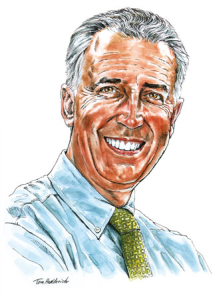The fact that I have been able to attend 40 MIP-TVs is a reason to be pitied, not celebrated. As member of the “press,” I would probably be more appreciated if I were to head to the laundry room to “press” some shirts rather than poking around asking questions for stories that are going to be published.

This MIP-TV marks my 40th annual participation at the Cannes TV market (coincidentally, I also attended my 40th NATPE in January).
Not that this anniversary is a milestone. After all, there are lots of other participants who have more registration badges, and umpteen executives more deserving of the attention than a journalist.
However, the fact that I’m most likely the oldest journalist continuing to report on the market could be a reason to at least commiserate with me.
MIP-TV organizers — understandably — have reasons to ignore this anniversary, since (even though they mercifully continue to tolerate VideoAge) they tend to consider my presence with some anxiety, and anticipate my frank reporting with trepidation. They also don’t fully understand why VideoAge has to publish unfavorable comments from market participants.
And it is an anniversary that they will indeed ignore. While MIP-TV’s 20-year veterans are celebrated with badges marked as “gold” or VIP, mine remains “UIP” (Undesirable Invited Press, that is). They hope that instead of poking around, I’ll go to the laundry area to “press” some shirts, or go around selling ads like others in the trades do, having nothing else to do after dropping their publications in the magazine bins.
This can be said for all trade markets — past and present — primarily for two reasons: a reluctance to understand that VideoAge is a mirror that reflects what’s out there, and the fact that VideoAge is the only TV trade publication that actually previews and reviews TV markets.
If the other trades don’t comment on the markets’ expectations and outcomes, why do we? After all, who has given VideoAge the mandate to report on what’s good and what’s bad at these international TV trade events? The answers to those questions are twofold. First, it’s the role of VideoAge to inform its readers, who are often too busy at the markets to find out what’s going on around them. Second, it’s VideoAge’s duty to represent the interests of its constituencies, which in our case means the advertisers, the content buyers, the sellers (who finance the markets), and even the markets themselves. Because, after all, without these markets there wouldn’t be a VideoAge. Our honest reporting assures that the markets don’t lose the confidence of their participants.
My very first MIP-TV was in 1979 representing TV/Radio Age (as its International Editor). The trade show was then held in the Old Palais (the current site of the JW Marriott hotel) and the registration area was at the adjacent La Malmaison.
I continued attending the market as VideoAge’s editor starting in 1981, when the publication was born. It began with MIP-TV founder, Bernard Chevry, who never missed an opportunity to scold me. Once, in 1983 he wanted to ban VideoAge from attending MIP-TV because of an ad we ran for the competing Monte Carlo TV Market. In his view, we displayed disloyalty. Fortunately, Chevry’s second in command, Xavier Roy, came to the rescue as an effective mediator.
However, when Roy took over the management of MIP-TV, following its sale first to a British company, and subsequently to an Anglo-Dutch group, he gave a very hard time to VideoAge Daily, the TV industry’s first market daily. Our lawyers in New York and Paris made the case that MIP-TV was acquired with its goodwill, which included our Daily.
When Roy left, VideoAge’s relationship with the new management greatly improved. The new bosses reasoned that the success of trade publications was tied to the success of the market, and vice versa. Nevertheless, they are still often baffled by the fact that we can’t simply report the official news.
(By Dom Serafini)
Audio Version (a DV Works service)

Leave A Comment